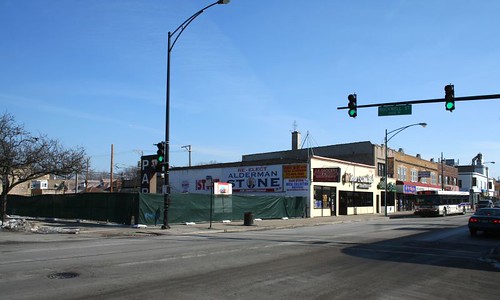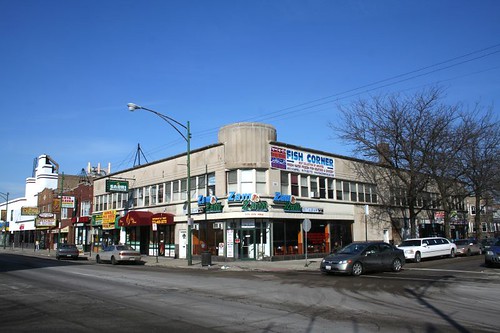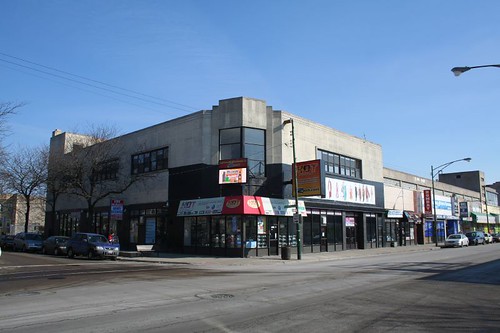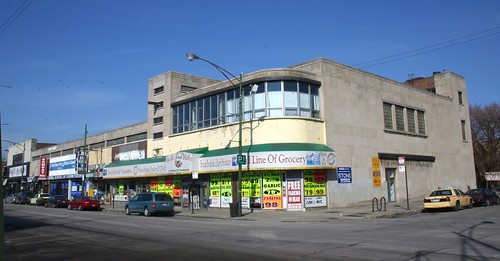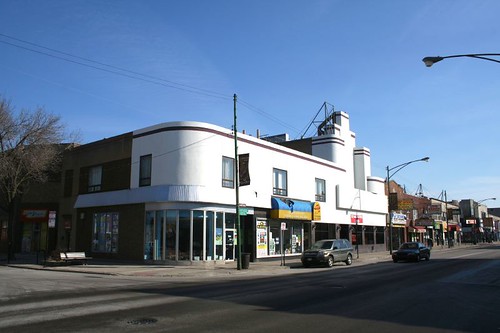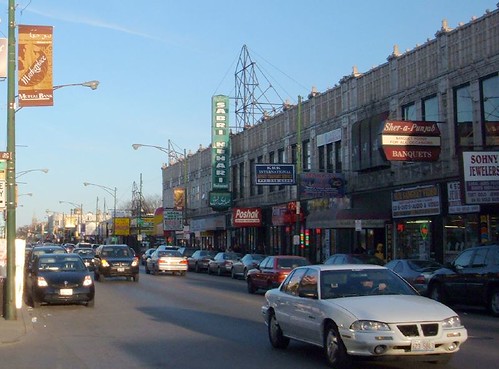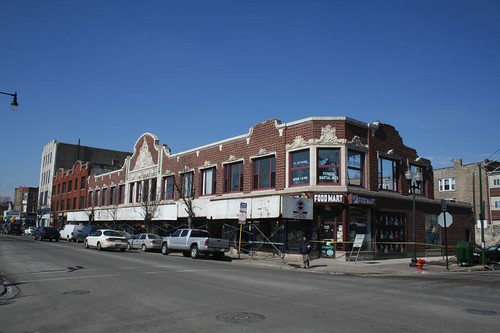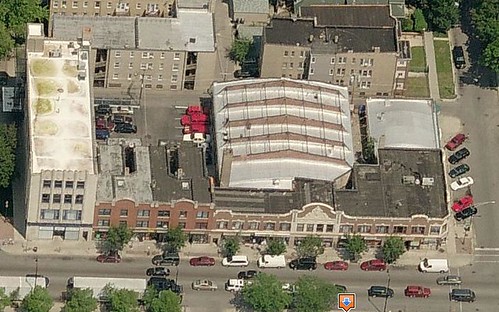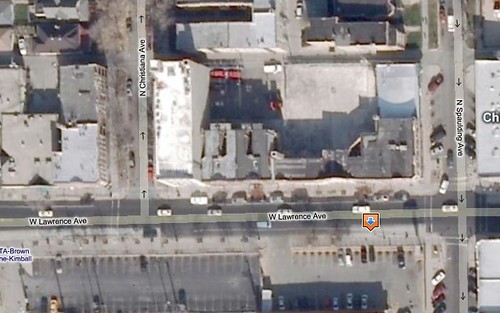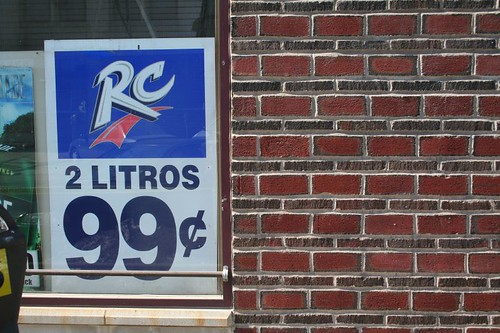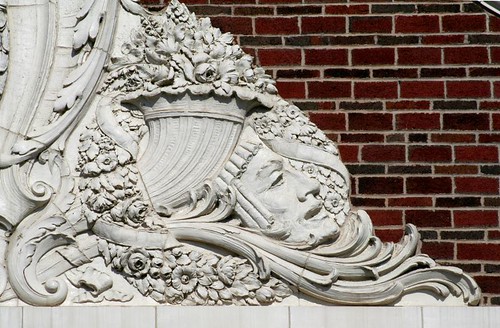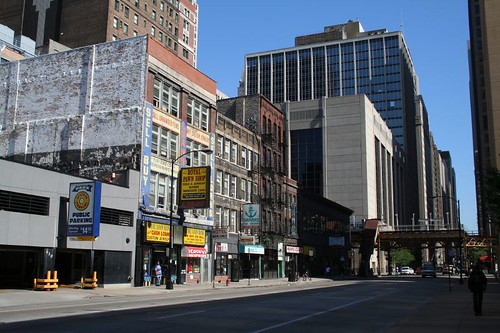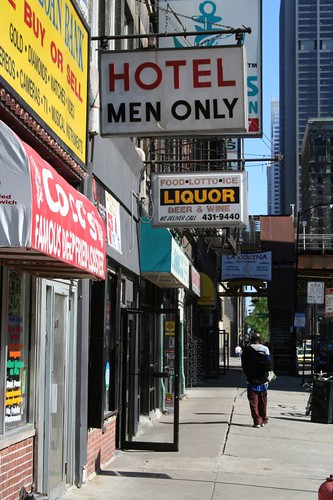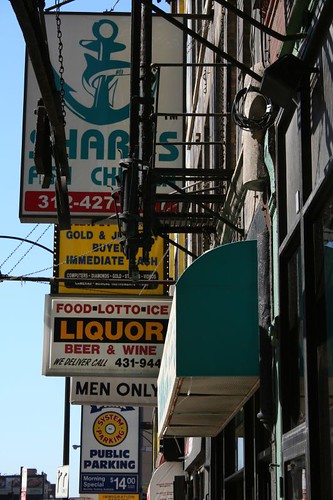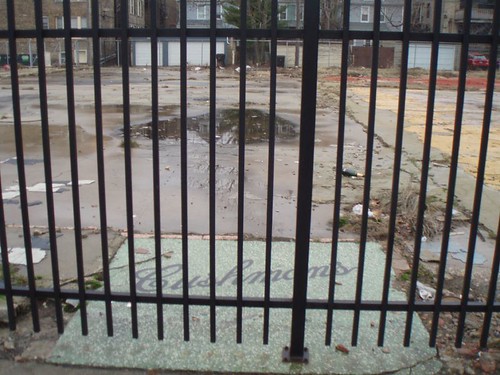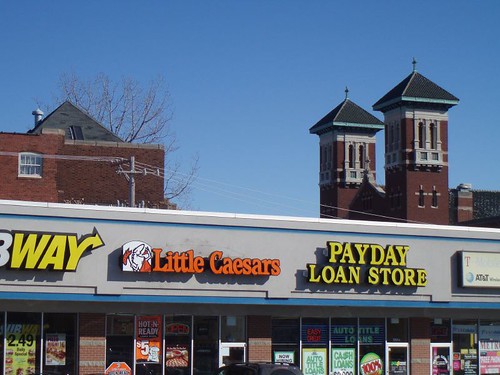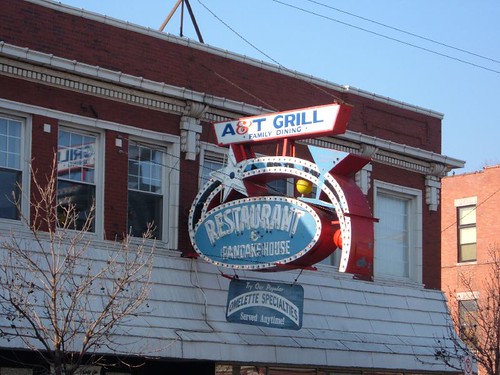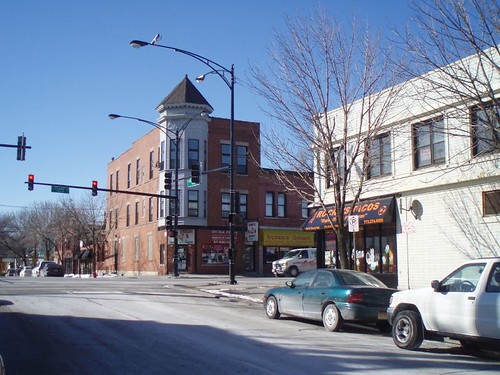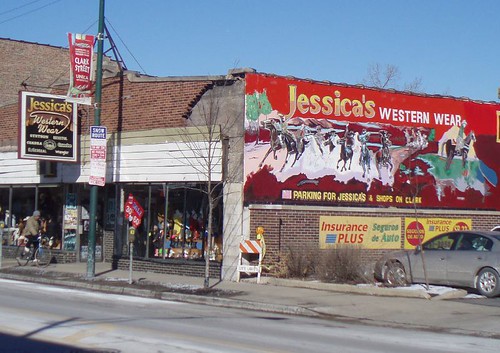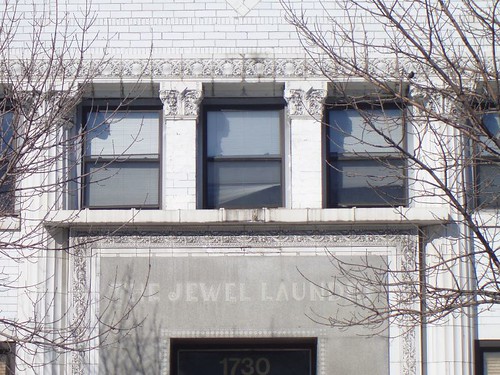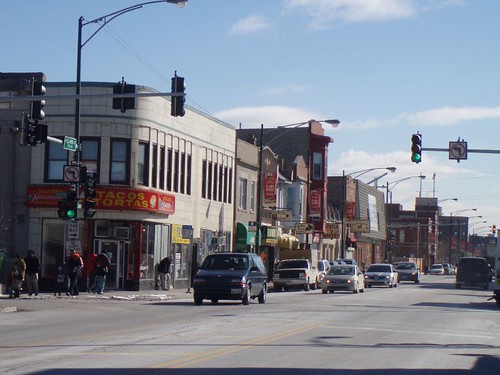Drexel is a grand urban parkway, divided by a huge strip of grass and trees, which starts just north of the University of Chicago. It looks like a major thoroughfare till you reach its northern end and find that it goes nowhere, petering out around 39th Street. On and around its short length, however, there's a lot of magnificent architecture and interesting urban sights, remnants of its heyday as a home to some of the city's wealthiest citizens.
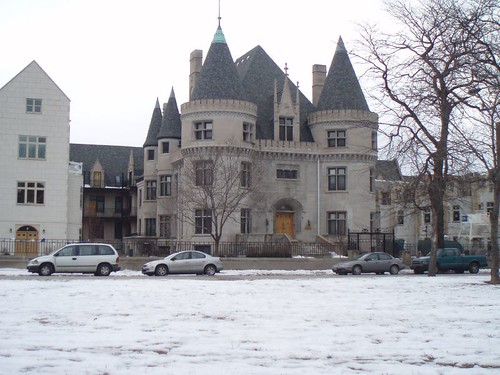
I have no idea what this chateau-like building was originally, or even what it is today.

Before it becomes a full boulevard, Drexel is thick with apartment blocks.
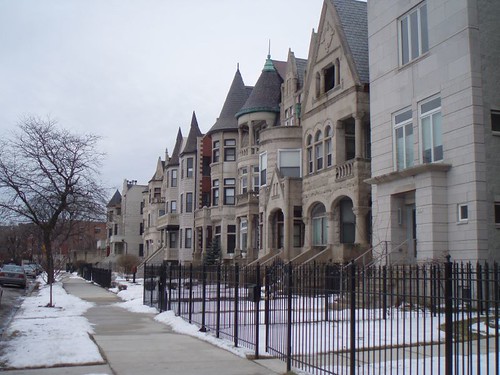
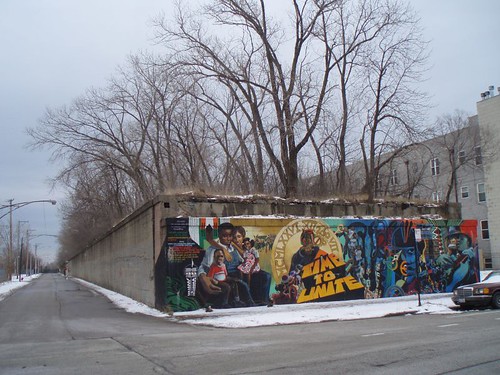
This abandoned railroad embankment once crossed the area on a bridge, now long vanished.

The orange windows are pretty awful, even by my Mid-Century Modern-loving standards, but the tile mosaic is lovely.
Drexel dies without warning into Oakwood Boulevard. Take a left and cruise west, and you'll find a couple of striking churches:

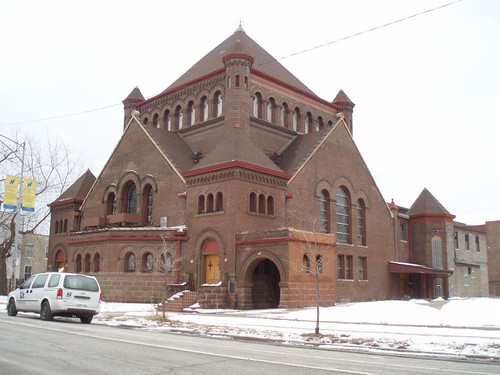

Just a bit west and north of that, they're tearing down huge numbers of old public housing buildings, including a lot of low-rise stuff that really ought to be reconditioned instead -- but that's a post for another day...

